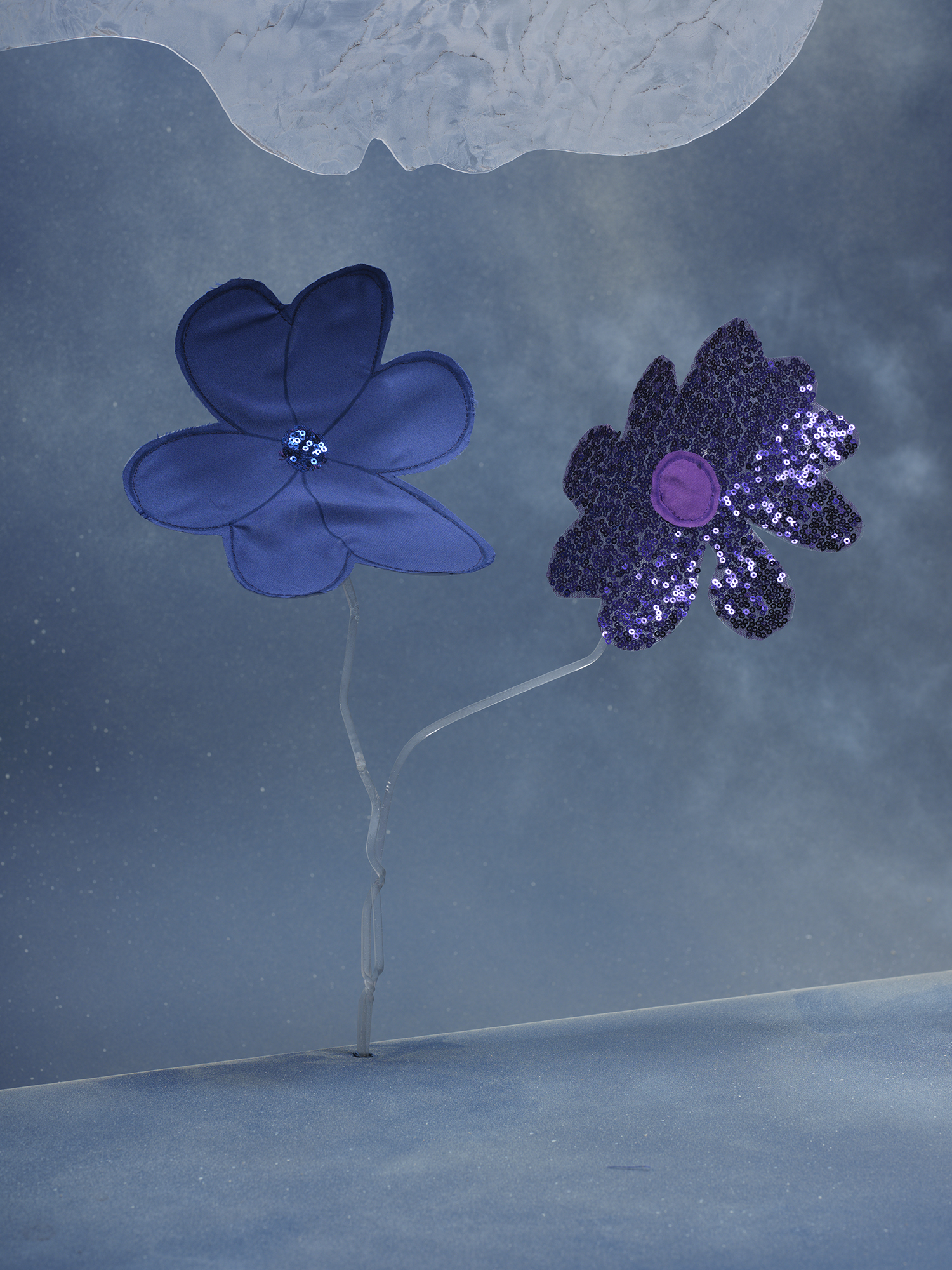


2022
Collaboration with Daniel Aurthur Mendoza
Soft Traces, Human Resources, Los Angeles, CA
archival inkjet prints, various dimensions
Soft is delicate, supple, pliable, velvety, cushiony, flexible, fleshy, yielding.
Trace is a fragment, a hint, ashred, a breath, a vestige, a snippet, an intimation, a marking.
Soft Traces is an exhibition of new works by Daniel Arthur Mendoza and Alex Delapena. It is an invitation to bemarked, to be flesh, to be breathed, to yield.
In one of Delapena’s photographs, a tender paper cut out of a human gazes over a stretch of abstracted landscapeunder a moon, considering a future, or the remains of a past, hope and grief mix here. Quickly, the infamous almost redundantly poignant political slogan “Another world is possible'' comes to mind. This image transports me to more resistance, less fear, more action, more accountability, away from screens, capital, deception, failed leadership, scorned bodies. The past, or is this the future?
Mendoza and Delapena’s works’ gentle and accessible wants are fulfilled, carrying a viewer close inside a canopy imbued with hope, history, and possibilities for change. In this shelter, we are asked to examine the weightiness of thevisual propaganda instilled by capitalist patriarchy. Cartoonish bodies laid on sheer fabric and naive cut out formsstilled in images immediately allow us entry. Malleable methodologies, such as the pliable placing and puppeteeringof paper, stitching, and quilting, suggest possibilities for an editing and an altering, of our realities and social normsthat are all too fixed by forces outside of ourselves. The artists signal our need to boldly reformat our realities, forge,stage or construct what we want to see in the world, and they propose a call to step into these new shapes.
“Our strategy should be not only to confront the Empire but to lay siege to it. To deprive it of oxygen… With our art,our music, our literature, our stubbornness, our joy, our brilliance, our sheer relentlessness–and our ability to tell ourown stories. Stories that are different from the ones we’re being brainwashed to believe.” - Arundhati Roy
Sensitive histories spill out from both artists’ practices, from material levity we land in their dense if not urgent politics,yet we are cared for here. Mendoza meticulously celebrates queer history and its historical veiled-ness within theconfines of daily life. Animated imagery and abstractions stitched from repurposed bed sheets and gauzy fabrics: affect, violences, intimacies, glamor and vulnerability merge here. Reconstituted materials, as always, point toresistance. Meanwhile, Delapena images spirits and historical traces from his complex home of Hawaii. Together photographed paper forms and soft monochromatic landscapes sensitively interrogate Hawaii’s oppressive colonial history as well as its landscape’s potency. Some of Delapena’s images point to the system of categorization and domination, wherein plantation laborers from different ethnic groups were distinguished by bango tags, in varyingshapes and sizes. (We too are marked here). Images of sugarcane invite your body, but the stalks are also starkly reminiscent of human bones as the landscape widens to include more of what has been hidden. (We become flesh here). Then, Mendoza’s luscious hanging circular work persuades you effortlessly to commune inside of it. (Respite, be breathed here). On this hanging monument, illustrated quilted bodies belong to each other. Soft welcoming facesand embraces brim forth from glowing purple fabric, evangelized by light. A space for layered corporeal bliss, a spaceall too needed.
A shared deviation from genre specific making allows for Delapena and Mendoza to confront the masculineblunt edges of the digital, the technical, the proficient, the automated. It’s in their denial of directness, in theirresponsive gestures, the sheerness, the naive, the poetic, the papery, the camouflage, the feeling, in the shadows,where these artists position themselves. As I consider these works, in this moment, when bodies increasingly layunder siege, as I wander through the diaphanous, the malleable thinking, the handmade-ness– I feel the hands ofthe artists. And I am reminded that art making is a physical gesture of love, and to this love, we may also choose to yield.
-Zoe Koke